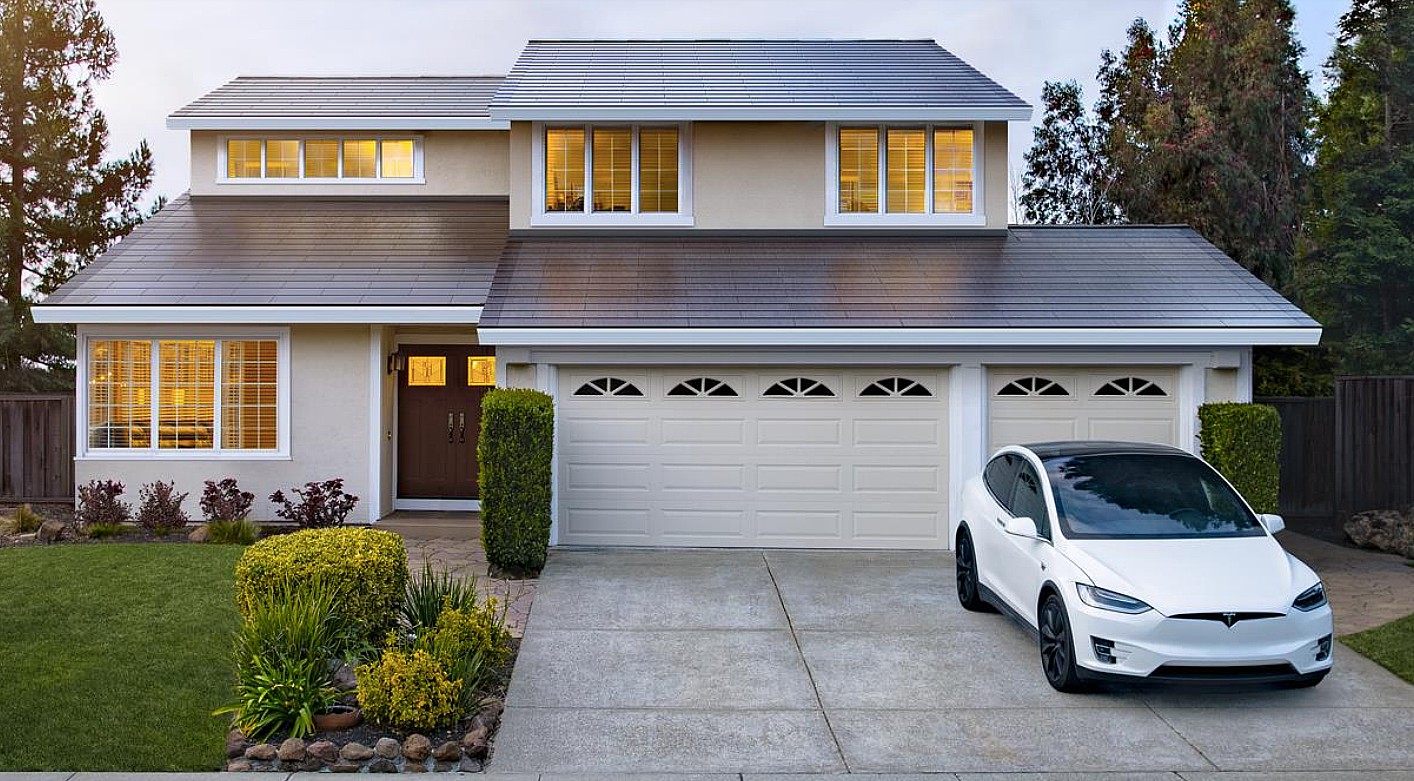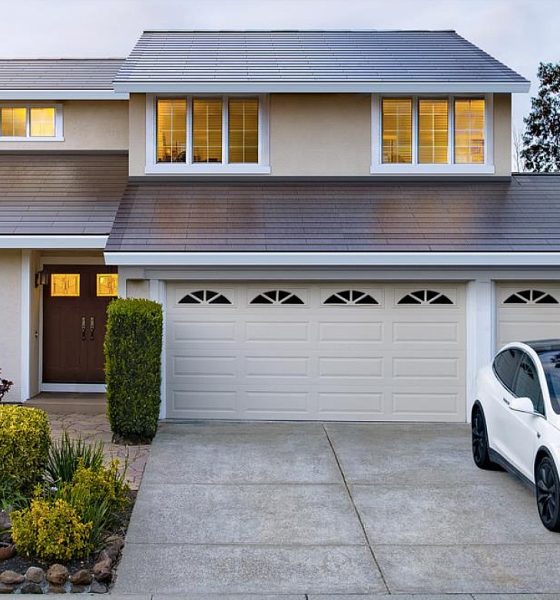Just recently, Tesla rolled out a subtle update to its official website. After welcoming the site’s visitors with its electric vehicle lineup for years, tesla.com now primarily showcases Tesla Energy products, represented by a header image featuring a home with solar panels and Powerwall batteries. The update was simple, but the company’s message was clear: Tesla Energy’s time to shine in the spotlight as arrived. The time to push battery storage and solar solutions into the mainstream market is now.
Tesla is known more as an electric vehicle manufacturer, and for good reason. The company owes its existence to the original Tesla Roadster, a small sports car that was built on a Lotus platform that broke mainstream conventions about what an electric car could be like. But the company’s mission as per CEO Elon Musk has always been clear: Tesla exists to accelerate the world’s transition to sustainability. And it just so happens that electric vehicles cannot get the job done alone.
During a previous interview with Teslarati, Robert Bollinger, the founder of Bollinger Motors, a maker of off-road, rough-and-tough EV trucks and pickups, stated that any new automaker today has to be focused on electric cars. And he’s absolutely right. It may not be universally acknowledged outright, but the automotive industry knows that electric vehicles are the way to go in order to survive the future. Full stop.
It might be a strange idea today, but there was once a time when electric vehicles were not taken seriously by the motoring industry at all. With the Model S, Model 3, Model X, and now the Model Y, Tesla has essentially pulled the automotive sector towards electric transportation kicking and screaming. After years of empty EV promises, unnecessarily complex electric concept cars that will never get mass produced, and sweet-talking statements about commitments to a zero-emissions future, legacy auto simply cannot stand by and maintain its old stance. It simply cannot afford to if it wants to survive.
The same has not happened yet to the utility sector. Renewables are on the rise, and climate action awareness is gaining ground. But overall, the idea of utilities being powered by renewables and giant batteries is still widely considered as niche ideas for now. The fossil fuel industry is still very prominent in the energy sector, and thus, the battle for sustainability on this front is only just beginning — and it will be very, very difficult. If the automotive sector was pulled into EVs kicking and screaming, the energy sector, which is dominated by the fossil fuel industry, will likely fight even harder.
This is something that supporters of Tesla and those that follow the company have to keep in mind. Tesla has struggled with misinformation for over a decade thanks to short-sellers and skeptics who simply don’t believe in electric cars or the company’s specific approach to EVs. It would thus be wise to brace for the upcoming challenges that will be brought about by Tesla quite literally taking on the fossil fuel industry, and in an arena that it has dominated for a very long time.
Fortunately, Tesla is now a mature company with an equally mature technology. Its battery tech is also second to none, as evidenced by the upcoming announcements for its highly-speculated million-mile battery. These, together with the support of an electric car business that is now the largest in the automotive industry by market cap, may very well give Tesla Energy enough power to disrupt, and eventually transition, the utility sector towards sustainability.

Cybertruck
Tesla updates Cybertruck owners about key Powershare feature

Tesla is updating Cybertruck owners on its timeline of a massive feature that has yet to ship: Powershare with Powerwall.
Powershare is a bidirectional charging feature exclusive to Cybertruck, which allows the vehicle’s battery to act as a portable power source for homes, appliances, tools, other EVs, and more. It was announced in late 2023 as part of Tesla’s push into vehicle-to-everything energy sharing, and acting as a giant portable charger is the main advantage, as it can provide backup power during outages.
Cybertruck’s Powershare system supports both vehicle-to-load (V2L) and vehicle-to-home (V2H), making it flexible and well-rounded for a variety of applications.
However, even though the feature was promised with Cybertruck, it has yet to be shipped to vehicles. Tesla communicated with owners through email recently regarding Powershare with Powerwall, which essentially has the pickup act as an extended battery.
Powerwall discharge would be prioritized before tapping into the truck’s larger pack.
However, Tesla is still working on getting the feature out to owners, an email said:
“We’re writing to let you know that the Powershare with Powerwall feature is still in development and is now scheduled for release in mid-2026.
This new release date gives us additional time to design and test this feature, ensuring its ability to communicate and optimize energy sharing between your vehicle and many configurations and generations of Powerwall. We are also using this time to develop additional Powershare features that will help us continue to accelerate the world’s transition to sustainable energy.”
Owners have expressed some real disappointment in Tesla’s continuous delays in releasing the feature, as it was expected to be released by late 2024, but now has been pushed back several times to mid-2026, according to the email.
Foundation Series Cybertruck buyers paid extra, expecting the feature to be rolled out with their vehicle upon pickup.
Cybertruck’s Lead Engineer, Wes Morrill, even commented on the holdup:
As a Cybertruck owner who also has Powerwall, I empathize with the disappointed comments.
To their credit, the team has delivered powershare functionality to Cybertruck customers who otherwise have no backup with development of the powershare gateway. As well as those with solar…
— Wes (@wmorrill3) December 12, 2025
He said that “it turned out to be much harder than anticipated to make powershare work seamlessly with existing Powerwalls through existing wall connectors. Two grid-forming devices need to negotiate who will form and who will follow, depending on the state of charge of each, and they need to do this without a network and through multiple generations of hardware, and test and validate this process through rigorous certifications to ensure grid safety.”
It’s nice to see the transparency, but it is justified for some Cybertruck owners to feel like they’ve been bait-and-switched.
Energy
Tesla starts hiring efforts for Texas Megafactory
Tesla’s Brookshire site is expected to produce 10,000 Megapacks annually, equal to 40 gigawatt hours of energy storage.

Tesla has officially begun hiring for its new $200 million Megafactory in Brookshire, Texas, a manufacturing hub expected to employ 1,500 people by 2028. The facility, which will build Tesla’s grid-scale Megapack batteries, is part of the company’s growing energy storage footprint.
Tesla’s hiring efforts for the Texas Megafactory are hinted at by the job openings currently active on the company’s Careers website.
Tesla’s Texas Megafactory
Tesla’s Brookshire site is expected to produce 10,000 Megapacks annually, equal to 40 gigawatt hours of energy storage, similar to the Lathrop Megafactory in California. Tesla’s Careers website currently lists over 30 job openings for the site, from engineers, welders, and project managers. Each of the openings is listed for Brookshire, Texas.
The company has leased two buildings in Empire West Business Park, with over $194 million in combined property and equipment investment. Tesla’s agreement with Waller County includes a 60% property tax abatement, contingent on meeting employment benchmarks: 375 jobs by 2026, 750 by 2027, and 1,500 by 2028, as noted in a report from the Houston Business Journal. Tesla is required to employ at least 1,500 workers in the facility through the rest of the 10-year abatement period.
Tesla’s clean energy boom
City officials have stated that Tesla’s arrival marks a turning point for the Texas city, as it highlights a shift from logistics to advanced clean energy manufacturing. Ramiro Bautista from Brookshire’s economic development office, highlighted this in a comment to the Journal.
“(Tesla) has great-paying jobs. Not just that, but the advanced manufacturing (and) clean energy is coming to the area,” he said. “So it’s not just your normal logistics manufacturing. This is advanced manufacturing coming to this area, and this brings a different type of job and investment into the local economy.”
Energy
Tesla and Samsung SDI in talks over new US battery storage deal: report
The update was related by industry sources and initially reported by South Korean news outlets.

Recent reports have suggested that Tesla and Samsung SDI are in talks over a potential partnership to supply batteries for large-scale energy storage systems (ESS).
The update was related by industry sources and initially reported by South Korean news outlets.
ESS batteries to be built at Samsung’s Indiana plant
As noted in a report from Korea JoongAng Daily, the demand for energy storage systems has been growing rapidly in North America, thanks in no small part to the surge in AI investments across numerous companies. With this in mind, Tesla has reportedly approached Samsung SDI about a potential battery supply deal.
The deal is reportedly worth over 3 trillion Korean won (approximately $2.11 billion) and will span three years, according to The Korea Global Economic Daily. A battery supply deal with Samsung SDI could make sense for Tesla as the company already has a grid-scale battery, the Megapack, which is perfect for industrial use. Samsung SDI could simply supply cells for the EV maker.
Production of the batteries would reportedly take place at Samsung SDI’s joint venture factory with Stellantis in Indiana, which is currently under construction. Samsung SDI recently announced plans to use part of that plant’s EV lines to produce cells for ESS, with a targeted capacity of 30 GWh by the end of next year.
Tesla and Samsung’s partnership
At present, only a handful of manufacturers, including Korea’s LG Energy Solution, Samsung SDI, SK On, and Japan’s Panasonic, are capable of producing energy storage-scale batteries domestically in the United States. A Samsung SDI official issued a comment about the matter, stating, “Nothing has been finalized regarding cooperation with Tesla.”
The possible energy storage system deal adds another layer to Tesla’s growing collaboration with Samsung, which is already in line as a partner in the upcoming production of Tesla’s AI5 and AI6 chips. Early sample manufacturing of the AI6 is expected to begin in South Korea, with mass production slated for Samsung’s Texas-based Taylor foundry when it starts operations.
The AI6 chip will power Tesla’s next wave of high-volume projects, including the Optimus humanoid robot and the autonomous Cybercab service. Musk has called the partnership with Samsung a “real collaboration,” adding that he personally plans to “walk the line” at the Taylor facility to speed up progress.










